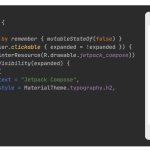The Singleton design pattern is widely used in Java as a creational design pattern. It guarantees that a class has only one instance and offers a universal access point to that instance. This pattern proves particularly beneficial when you wish to restrict the number of class instances to one, for example, handling shared resources or a configuration manager.
To implement the Singleton design pattern in Java, you need to follow specific steps:
Private constructor: To prevent other classes from creating instances of the Singleton class, you can make the class constructor private.
Private static instance: To ensure that there is only one instance of the class, creating a private static variable that will hold the sole representative is recommended. This will help avoid any potential issues arising from having multiple instances of the same class.
Public static getInstance() method: Create a general fixed plan that provides access to the single instance of the class. This method will create the example if it does not exist or return the existing model.
Here’s an example of implementing the Singleton design pattern in Java:
Usage of the Singleton class:
While the above implementation is a simple example of lazy initialization (i.e., creating the instance only when needed), it is not thread-safe. Multiple threads accessing the getInstance() method simultaneously may create numerous instances. To ensure thread safety, you can use synchronization techniques like synchronized blocks, double-check locking, or initialization-on-demand holder idiom (also known as the “Bill Pugh Singleton”).
It’s important to keep in mind that Singleton may not always be the best solution for specific situations. In some cases, it can make unit testing more challenging and lead to tight coupling. Before implementing the Singleton pattern, it’s crucial to evaluate whether it’s suitable for your particular use case.











